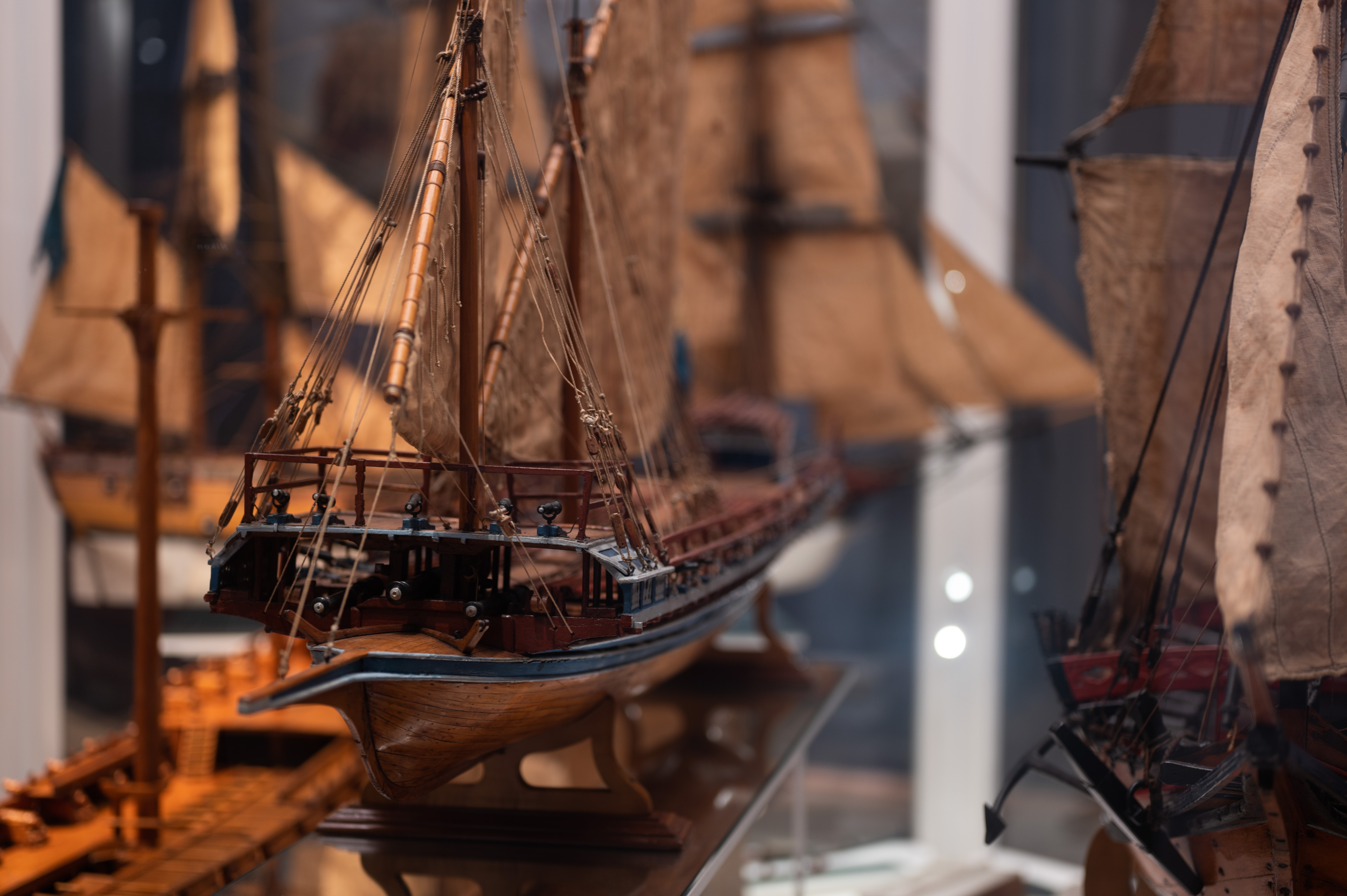
The Model Chamber
Hundreds of years old ship models, clever constructions and beautiful decorations can be found in the Marine Museum's model room.
The Model Chamber is the heart of the Naval Museum. It was founded as early as 1752 by then-King Adolf Frederick. The king wanted all models built at the shipyard in Karlskrona to be preserved for the future. At the time, models were a way to test properties and technical solutions of various constructions before beginning large-scale production.
Today, you can see these unique and fascinating original models in the Model Chamber of the Naval Museum. They offer an exciting insight into the engineering expertise of the past and how people thought in the 18th century.
Multiple Functions
The Model Chamber mainly contains items from the ship model chamber in Karlskrona. A ship model chamber used for several things. The most important thing was to build miniature models of ships, buildings, technical tools, and more to test how well the constructions worked in practice. In large water-filled towing tanks, for example, one could closely examine the characteristics of different ship types.
But the models were also used to demonstrate various projects to the king or other influential people, or for education. There were also so-called showpieces, intended solely for display.
The Model Chamber Grows
In the early 1780s, master shipbuilder Fredrik Henrik af Chapman moved to Karlskrona from Stockholm, where he had been the manager of the Djurgården shipyard. His mission was clear but still a trial by fire: to rebuild Gustav III’s fleet with new ships-of-the-line and frigates.
For a long time, the art of shipbuilding was often something private, where the craft was passed down for generations in boatbuilding families and people were careful not to reveal trade secrets to outsiders. But in 1783, Fredrik Henrik af Chapman sold his ship models to the crown. He established a well-functioning model workshop at the naval shipyard in Karlskrona, and six model builders were hired. The famous shipbuilding family Sheldon’s models were purchased in 1801, and according to the 1834 inventory list, the ship model chamber in Karlskrona had 400 models that year.
Windmill Car or Something Else Entirely?
The Model Chamber at the Naval Museum contains far more than just ship and boat models. Here you can see models of buildings and structures that we know really existed, such as the mast crane at the Karlskrona Naval Shipyard (built in 1806) and an octagonal grinding house from the 18th century that was powered by horses and oxen.
But there are also models that clearly would never work and where the project was likely scrapped at the idea stage. Then there are the other ones—where we don’t know. Where the source material is too scarce or completely absent and cannot give us the truth. Like the “windmill car.” The model, from the 18th century, shows a three-wheeled cart with a windmill built on top, where the sails could drive the wheels. But what was it intended to be? One guess is that the device was supposed to power various machines, perhaps grindstones. Or is the truth something entirely different, even more fascinating: could it have been an 18th-century wind-powered car?
We don’t know if the “windmill car” was ever built or if it only existed as a model. Nor do we know what it was meant for—anything more would be speculation. The ship model chamber must once have been a place where creativity flowed. A place where imagination set the limits.
